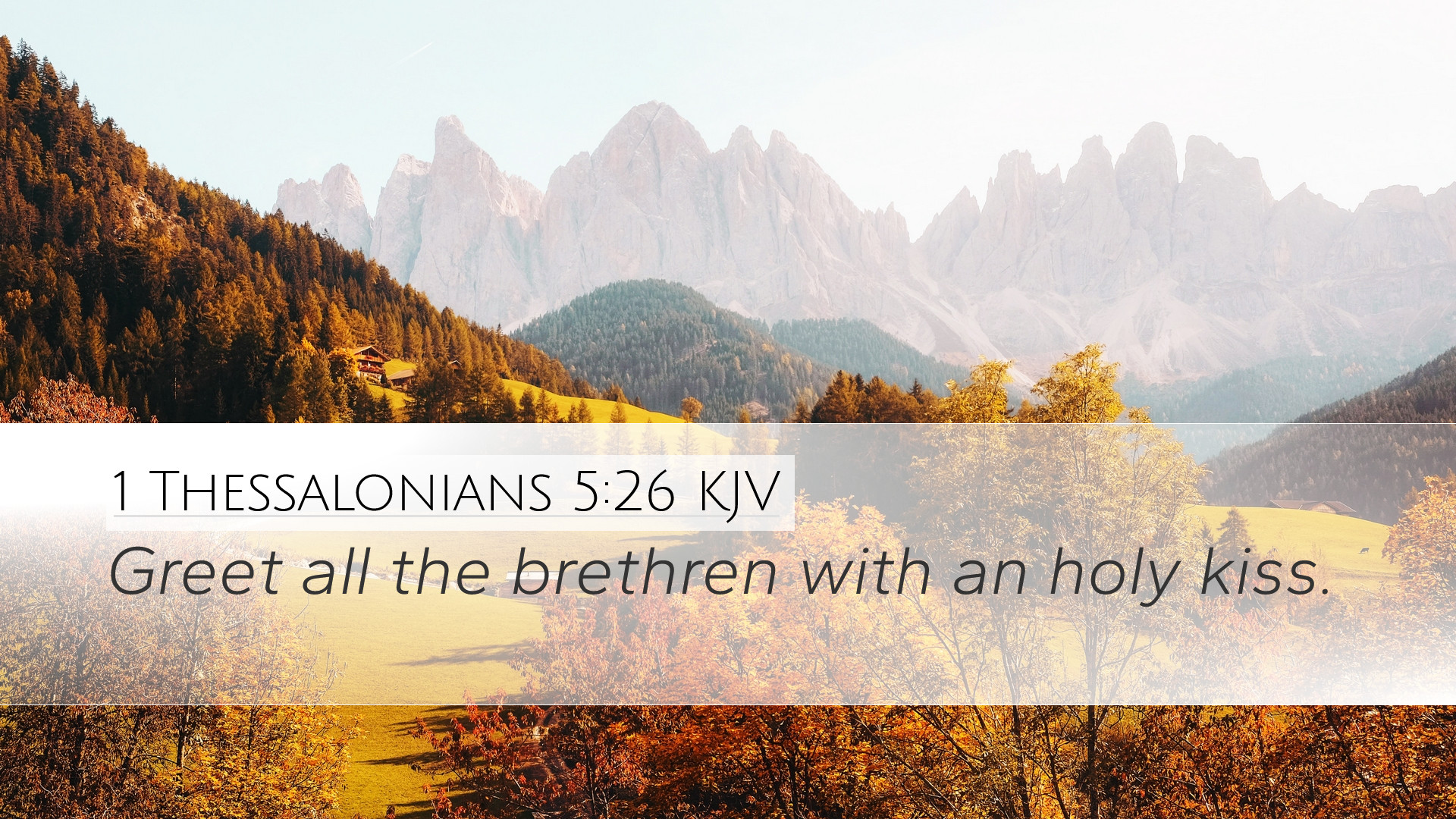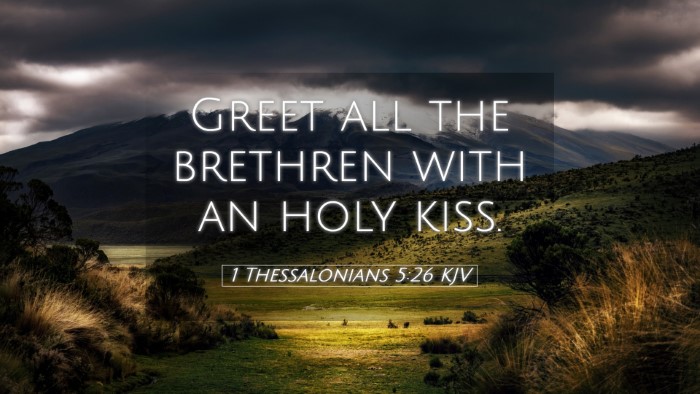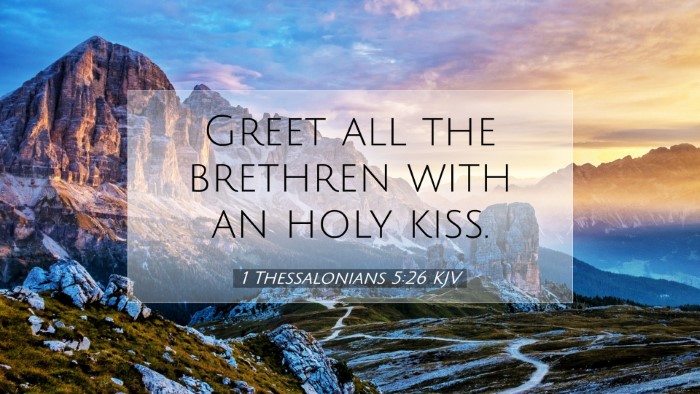Commentary on 1 Thessalonians 5:26
Bible Verse: "Greet all the brothers with a holy kiss." (1 Thessalonians 5:26, ESV)
Introduction
This verse is a brief yet profound exhortation from the Apostle Paul to the Thessalonian church. It serves to emphasize the importance of fellowship, affection, and the unity of believers. By examining the context and implications of this greeting, we gain insights vital for pastors, theologians, and believers alike.
Contextual Analysis
Paul's letter to the Thessalonians is not merely a theological treatise but a pastoral correspondence, characterized by affection and practical instructions for living out the Christian faith.
- Encouragement in Persecution: The Thessalonian Christians faced significant trials, and Paul's letters provide comfort and encouragement.
- Community in Christ: The call to greet one another emphasizes the relational aspect of faith; it is not lived in isolation.
Insights from Matthew Henry
Matthew Henry emphasizes the importance of brotherly love and mutual support among Christians. He notes that the apostle's request to greet one another with a "holy kiss" signifies:
- The Nature of Christian Fellowship: It is marked by warmth, affection, and sincerity.
- Divine Approval: The kiss is “holy” because it is done in a manner that reflects the purity and sanctity of Christian love.
- Sign of Peace: In the cultural context of the time, kisses were customary greetings that conveyed peace and goodwill.
Henry reminds us that genuine affection among Christians strengthens bonds and builds a supportive community.
Insights from Albert Barnes
Albert Barnes provides additional insights on the cultural practices of the time, recognizing that:
- Cultural Relevance: The “holy kiss” was a common practice in the early church, reminding us that Paul addressed his audience within their cultural context.
- Norm of Greeting: This verse establishes a normative practice for Christian communities, extending beyond mere words to include physical expressions of greeting.
- Symbol of Unity: Greeting each other in such a way indicates a shared faith and purpose among believers, reinforcing the importance of unity in the body of Christ.
Barnes highlights that these practices should be adapted to our current context, emphasizing genuine relationships in Christian communities.
Insights from Adam Clarke
Adam Clarke's commentary delves into the theological implications of this verse, stating that:
- Holy Actions: The term "holy" relates to the authenticity and spiritual integrity of the handshake or kiss, reflecting the nature of the believer’s conduct.
- Mutual Respect: Clarke points out that such greetings foster an atmosphere of respect and reverence among believers.
- Expression of Affection: This directive serves as a reminder that the Christian faith is inherently relational, and expressions of love should be evident in all interactions.
Clarke encourages believers to cultivate an environment of affection and holiness in their greetings.
Theological Implications
The exhortation to greet one another with a holy kiss is rich in theological implications for both the early church and contemporary congregations:
- Communion of Saints: It highlights the need for connection and genuine community among believers, aligning with the doctrine of the communion of saints.
- The Body of Christ: Each member is important, and the way we interact with one another reflects our relationship with Christ.
- Witness to the World: Our community and expressions of care serve as a testimony to the world of Christ's transformative love.
Practical Applications for Today
In light of the insights gained from the commentaries, the following practical applications can be drawn:
- Encourage Affection: Pastors and leaders should promote simple acts of kindness and warmth within the church community.
- Adapt Cultural Practices: While the holy kiss may not be appropriate in every culture today, finding equivalent gestures (like a handshake, hug, or words of encouragement) is essential.
- Fostering Unity: Create opportunities for fellowship where believers can share their lives, thus strengthening the unity of the body of Christ.
- Model Christlike Love: Set an example of genuine love that transcends superficial interactions, inviting others into deeper fellowship.
Conclusion
The command to greet one another with a holy kiss in 1 Thessalonians 5:26 is more than a social nicety; it is a profound instruction on Christian community life, love, and unity. By embracing the insights from the wealth of biblical commentary, we are encouraged to embody these principles in our relationships with one another. Ultimately, this fosters a stronger, more nurturing community of believers that reflects the love of Christ.


